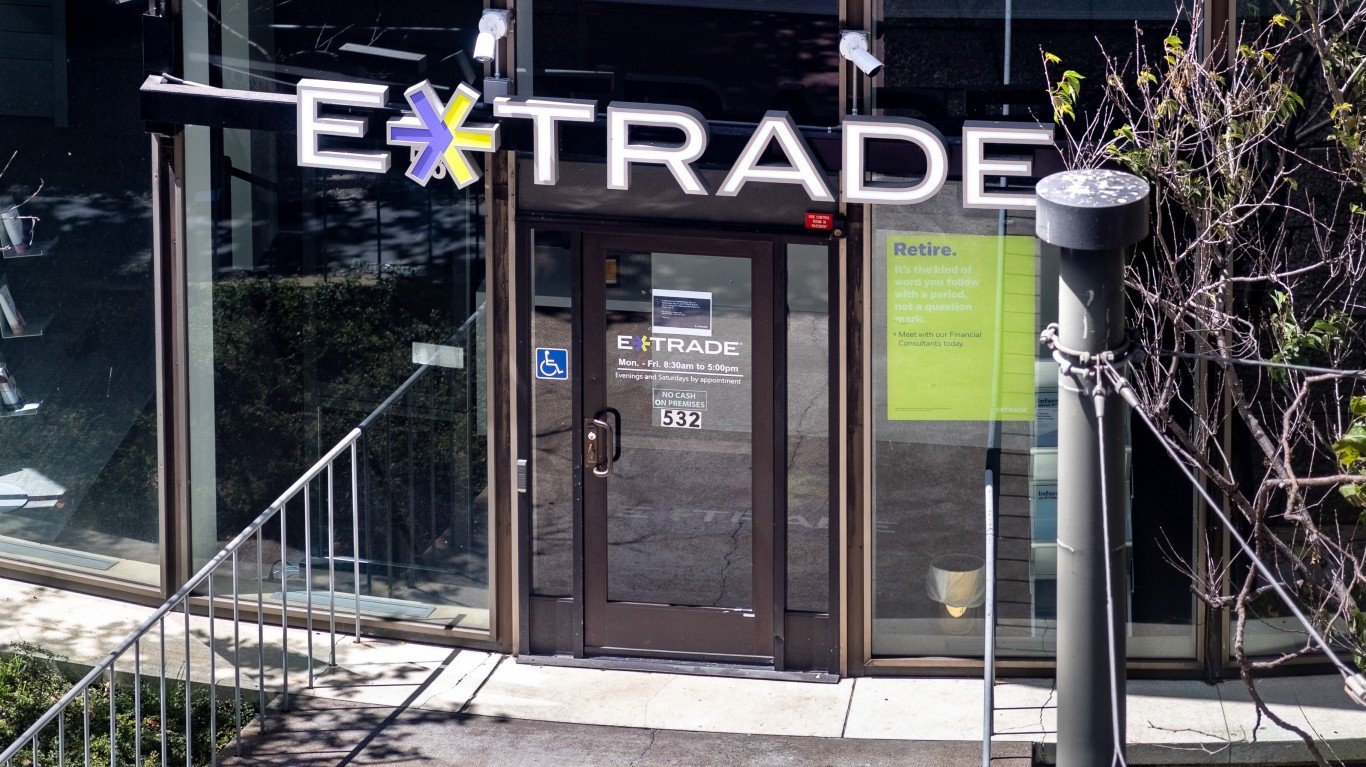

The start of 2020 felt like a virtual Goldilocks period for the major U.S. banks, but the COVID-19 recession has changed all of that drastically. Interest rates were stable at the start of the year and expected to remain that way. Asset prices for management fees were climbing. there were stable net interest margins, and investment bank and in-house activities were strong. This rapid deterioration has created a very difficult situation for the major U.S. banks that are supposed to be lending out money to businesses to keep the economy going.
Many investors have to be thinking that even big banks having sold off 40% and 50% from their peak may have been too much. With earnings season nearing for the first quarter of 2020, there could easily be a mixed bag where some bank earnings look far better than others. After all, two-thirds of the first quarter was still not dominated by all the talk of recession.
24/7 Wall St. has tracked the book values per share, if available from the major banks. We have also reviewed the current dividend yields to see which dividends now seem unsustainably high. It looks very possible that banks could see their tangible and stated book value per share decline at the same time that regulators begin to force dividend cuts or scrutinize those dividend. Those dividend cuts have not yet been mandated are not universally a foregone conclusion, but the banks have all pledged to suspend stock buybacks in an effort to conserve capital.
This coming earnings season is a time when value investors, looking at book values per share, and income investors, those looking for stable dividend payments, are going to find themselves worried about many of the same issues.
Bank of America Corp. (NYSE: BAC) was last seen close to $21.00 and its dividend yield of 3.5% is still lower than some of the others because that dividend had been kept lower for longer than other banks by regulators. At the end of 2019, its book value was listed as $27.32, up from $26.96 in the prior quarter. Its tangible book value per share was $19.41, up from $19.26 in the prior quarter.
Citigroup Inc. (NYSE: C) was last seen trading right at $40.00 with a dividend yield that is now up at 5% due to the sell-off. Citi ended 2019 with a tangible book value per share of $70.39 (up from $69.03 in the prior quarter) and a stated book value per share of $82.90 (up from $81.02 in the prior quarter). Citi shares are down just over 50% from their 52-week high.
Goldman Sachs Group Inc. (NYSE: GS) was recently trading at $155.00 with a dividend yield of about 3.25%. Goldman Sachs ended 2019 with a stated book value of $218.52 and a tangible book value per share of $205.15. Those compared with $218.82 and $205.50, respectively, in the prior quarter. This bank holding company, which is still rather light on formal banking despite its Marcus efforts, down about 38% from its highs.
JPMorgan Chase & Co. (NYSE: JPM) was up over 5% at $88.50 on Monday despite some dire warnings from CEO Jamie Dimon about potential dividend cuts and other issues if this economy becomes stressed as much as the financial crisis. At $88.50, its yield of 4.1% is a high yield but the bank is still above book value despite being down almost 40% from its highs. JPMorgan Chase’s tangible book value per share was $60.98 at the end of 2019 and $60.48 in the prior quarter. The top bank in the country has seen its stock drop 40% from its high.
Morgan Stanley (NYSE: MS) has recovered handily from its low with a $36.00 share price as it is still in the hunt to acquire E*TRADE. At $36.00 its dividend yield is closer to 3.9%. Morgan Stanley’s book value was $45.82 per share and its tangible book value was $40.01 at the end of 2019. It is still down over 37% from its highs despite having bounced more than 30% from its lows.
The PNC Financial Services Group, Inc. (NYSE: PNC) was last seen trading at close to $94.00, down over 40% from a 52-week high of $161.79. Its dividend yield was last seen above 5%, with a stated book value of $104.59 and a tangible book value per share of $83.30 at the end of 2019.
Wells Fargo & Co. (NYSE: WFC) was last seen just above $28.00 and its dividend would screen at above 7% since it is still barely half of its 52-week high of $54.75 and even worse against its old highs above $65 from before its account-opening scandals. Wells Fargo is still under stronger scrutiny than the other major banks due to its account opening scandals and other operational flaws in recent years. The bank now screens at about 0.7 times book value, but with a cap on growing assets it is in a different classification versus when this was considered to rival JPMorgan Chase as the safest bank in America.
With banks now agreeing to put all stock buybacks on hold for the recessionary period we are in, the big focus will be on whether or not the banks can maintain their dividend yields and keep their book value per share from shrinking too much. Those dividends and book values could all come under pressure if the current economic situation does not rapidly improve.
Banks do not offer earnings guidance when they report results and we should be seeing earnings galore in the next two weeks. The Federal Reserve’s Comprehensive Capital Analysis and Review, the annual stress tests used for dividends and buybacks, are not due until June. At that point much more of the depth of the financial pressure on the banks will be more quantifiable.
Take This Retirement Quiz To Get Matched With A Financial Advisor (Sponsored)
Take the quiz below to get matched with a financial advisor today.
Each advisor has been vetted by SmartAsset and is held to a fiduciary standard to act in your best interests.
Here’s how it works:
1. Answer SmartAsset advisor match quiz
2. Review your pre-screened matches at your leisure. Check out the advisors’ profiles.
3. Speak with advisors at no cost to you. Have an introductory call on the phone or introduction in person and choose whom to work with in the future
Take the retirement quiz right here.
Thank you for reading! Have some feedback for us?
Contact the 24/7 Wall St. editorial team.



